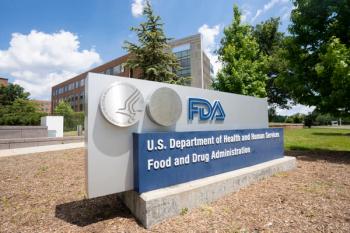
PTSM: Pharmaceutical Technology Sourcing and Management
- PTSM: Pharmaceutical Technology Sourcing and Management-01-31-2007
- Volume 3
- Issue 1
Changing Fortunes in Pharmaceutical Manufacturing
Pfizer's restructuring plan provides yet another example of new supply-chain strategies by the pharmaceutical majors, which involve rationalization of manufacturing facilities and cost improvement. A review of these moves, an outlook for the pharmaceutical market in 2007, and analysis of US pharmaceutical production and trade.
Pfizer, Inc.'s (New York, NY,
Pfizer leads the way in supply-chain reform
Pfizer's recent restructuring effort is expected to save the company $1.5–2 billion by the end of 2008. Pfizer plans to generate cost savings through site rationalization in research and manufacturing, streamlined organizational structures, staff-function reductions, increased outsourcing, and procurement savings. The plan follows Pfizer's "Adapting to Scale Initiative," a multiyear productivity program launched in the first quarter of 2005, designed to save the company $4 billion by 2008.
In its most recent effort, Pfizer will continue to consolidate its worldwide manufacturing operations with the closure of two additional manufacturing sites: Brooklyn, New York and Omaha, Nebraska. The company also will pursue the sale of a third site in Feucht, Germany, subject to consultation with works councils and local labor law. With these moves, Pfizer will have reduced its global network of manufacturing plants from 93 in 2003 to 48 by 2008.
As part of an ongoing effort to cut down on bureaucracy and reduce management layers, Pfizer says it has eliminated many unnecessary committees and cross-functional teams and is in the process of cutting at least three to four layers of management in its pharmaceutical, R&D, and manufacturing divisions, as well as company-wide support functions.
The restructuring by Pfizer follows Eli Lilly and Company's (Indianapolis, IN,
To support production of its biotech-based products, specific investments include an expansion to Eli Lilly's site in Kinsale, Ireland to manufacture active pharmaceutical ingredients (APIs) for future biotech products. In addition, Lilly will expand its Indianapolis parenteral operations so that the site can convert the biotech APIs made in Kinsale into their final dosage forms. Both expansions are part of a $1.5-billion investment in the company's biotechnology capabilities announced over the past five years. These expansions follow the recently completed $1-billion expansion of Lilly's Puerto Rico manufacturing operations, which includes new bulk capacity for "Humalog" (insulin lispro [rDNA origin] injection).
Other recent manufacturing restructuring in the pharmaceutical industry includes that undertaken by Astellas Pharma Inc. (Tokyo,
Meanwhile, Merck & Co, Inc. (Whitehouse Station, NJ,
Pharmaceutical market growth moderates in 2007
The pressure on pharmaceutical companies to save costs and improve their supply chains comes as growth in the global pharmaceutical market is expected to moderate. In 2007, the global pharmaceutical market is expected to grow at 5–6%, compared with growth of 6–7% in 2006, according to IMS Health (Fairfield, CT,
The need for the pharmaceutical majors to adjust their manufacturing strategy may be seen in the growth patterns of the global pharmaceuticals market, with projected higher growth for biotechnology-based products and generic drugs. In 2007, biotechnology products are expected to grow at 13–14% and the generic drug market at 10–11%, according to IMS. In 2007, marketed products with a value of more than $16 billion will likely lose patent protection, which follows $23 billion of products that lost protection in 2006. Generic drug penentration is particularly keen in the US market, where several key brands valued at $10 billion will lose patent protection in 2007, following the patent expiry of $19 billion in branded products in 2006.
The geographic balance of the pharmaceutical market continues to shift away from the United States toward emerging markets, defined as countries with a per capita gross national income of less than $20,000. These countries now represent 17% of the global market, but will contribute 30% of growth this year, according to IMS. Growth in the emerging markets is offsetting the slower growth coming from the US market, which will contribute about 36% of total market growth in 2007, significantly less than the 54% it contributed five years earlier.
Emerging markets, including China, India, Brazil and Turkey, grew more than 10% in 2006 and will do so again in 2007, largely because of their growing economies and broader access to medications, according to IMS. Growth in China will be 15–16%, and the market size will reach $15–16 billion in 2007. In general, locally manufactured generics dominate these markets.
US pharmaceutical production expected to rebound in 2007
While US pharmaceutical market growth is expected to moderate in 2007, US-based production of pharmaceuticals (finished products) is expected to rebound in 2007, with growth of 5.0%, according to the American Chemistry Council (ACC, Arlington, VA,
Table 1: US pharmaceutical production (actual and forecast)
While US output of pharmaceuticals has varied over the past decade, global production of pharmaceuticals has increased at a fairly constant pace and is expected to continue to grow moderately. In 2007, global output of pharmaceuticals (finished products) is expected to increase 3.3% and 3.5% in 2008, according to the ACC. These increases are on par with growth of 3.9% in 2006, 3.0% in 2005, 3.8% in 2004, and 3.9% in 2003. The pattern of moderate growth in global output of pharmaceuticals from 2003–2006 followed recent peak growth of 6.8% in 2002 and 8.6% in 2001 (see Table 2).
Table 2: Global Pharmaceutical production (actual and forecast)
US pharmaceutical trade deficit escalates
While US production of pharmaceuticals is expected to increase moderately in 2007 and 2008, the United States faces escalating trade deficits in pharmaceuticals. Between 1995 and 2005, US exports of pharmaceuticals increased 280% and in 2005 reached $25.5 billion (see Table 3), according to the ACC.
Table 3: US pharmaceutical exports (in $ million)
During this same period, US imports of pharmaceuticals increased 582% reaching $39.5 billion in 2005 (see Table 4), giving the United States a negative balance of trade in pharmaceuticals of nearly $14 billion in 2005. The United States has experienced a trade deficit in pharmaceuticals since 1997, when it was $547 million and which has steadily escalated since then (1) (see Table 5).
Table 4: US pharmaceutical imports (in $ million)
Table 5: US pharmaceutical trade balance (in $ million)
Tracking US pharmaceutical shipments
On a value basis, US shipments of pharmaceuticals reached $160.4 billion in 2005, according to the ACC. This continued an upward trend on a value basis for US shipments of pharmaceuticals, which reached $157.5 billion in 2004 and $150.7 billion in 2003 (see Table 6). Overall growth prospects are 1.3–6.0 times gross domestic product, according to the ACC (1).
Table 6: US pharmaceutical shipments (in $ million)
US pharmaceutical shipments ($ million)
Shipments measure the nominal value of products shipped from manufacturing facilities as reported by the Bureau of Census. It includes total sales minus imports and plus exports. Pharmaceuticals include prescription and over-the-counter drugs, in vitro and other diagnostic substances to monitor human and veterinary health, bacterial and virus vaccines, toxoids, serums, plasma, and other biological products.
On a global basis, pharmaceuticals (finished products) represented 25% of chemical shipments or $648.4 billion in 2005, again continuing an upward trend. In 2004, global pharmaceutical shipments were $618.1 billion and $554.0 billion in 2003 (1).
References
1. American Chemistry Council, Guide to the Business of Chemistry 2006, (Arlington, VA, 2006).
Articles in this issue
almost 19 years ago
Mergers, acquisitions, and restructuringalmost 19 years ago
Agreements and contractsalmost 19 years ago
Expansionsalmost 19 years ago
Peoplealmost 19 years ago
Simpler is Betteralmost 19 years ago
3M Drug Delivery Systems Advances Inhalation and Transdermal Drug DeliveryNewsletter
Get the essential updates shaping the future of pharma manufacturing and compliance—subscribe today to Pharmaceutical Technology and never miss a breakthrough.




